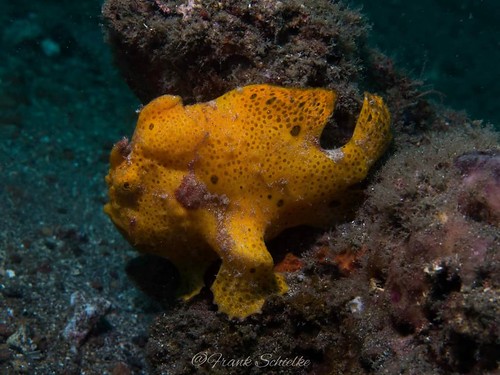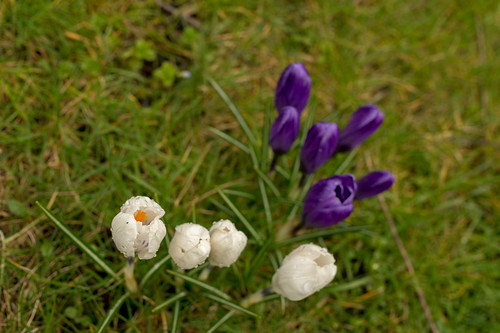Rown under each and every remedy inside a dark chamber employing the light source from the Li and a spectroradiometer (HRCGUVNIR; Ocean Optics Inc USA), as described by Schultz . All values obtained for were . with nonsignificant differences involving species and species treatment combinations.Estimation of Cc , Cs , and gm From combined gasexchange and chlorophyll a fluorescence measurements, the mesophyll conductance to CO (g m) was estimated for wheat and rice utilizing the socalled variable J approach (Harley et al). The estimated worth of g m for wheat and rice, each C species, was utilized to calculate Cc by applying the equation:Cc Ci (AN gm) Gas Exchange and Chlorophyll a Fluorescence MeasurementsAll leaf gas exchange and chlorophyll a fluorescence measurements were performed on the youngest completely expanded leaf of every plant, using a transportable photosynthesis program (Li; LiCor Inc USA) equipped with a leaf chamberMaize has a C based carbon concentrating mechanism, with inherent complexity that complicates mathematical modeling (Collatz et al ; von Caemmerer and Furbank, ; von Caemmerer, ; Ubierna et al). In this study, both g m and g bs (bundle sheath conductance) were regarded constant in maize (von Caemmerer, ; Massad et al ; Ghannoum,). Yin et al. have recently shown significant variation inFrontiers in Plant Science Perdomo et al.Rubisco, Rca and Photosynthetic Limitationsg bs in response to measurement temperature in maize plants grown at a continual temperature of C. Towards the ideal of our know-how, you’ll find no reports around the variation of g bs with growth temperature. Additionally, a sensitivity analysis (outcomes not shown) demonstrated that even big changes in g m did not impact our outcomes; we count on the PubMed ID:https://www.ncbi.nlm.nih.gov/pubmed/7593735 identical would hold accurate for g bs . The CO concentration inside the bundle sheath (Cs) of maize leaves was estimated in the hyperbolic function describing the AN Ci curves applying the C photosynthesis model described by von Caemmerer as detailed  by Massad et al. and with the modifications of Perdomo et alQuantification of Photosynthetic LimitationsTo compare the relative limitations to CO assimilation induced by WD, HT along with the mixture of each stresses, the photosynthetic limitations had been partitioned into their functional elements following the method proposed by Grassi and Magnani . This strategy utilizes values for AG , g s , and g m (Supplementary Table S) as well as the buy TMS maximum price of Rubisco carboxylation (V cmax) as references. The maximum AG , concomitantly with g s and V cmax , was reached under handle circumstances, as a result the manage therapy was utilised as a reference. In the present study, V cmax was calculated as the product with the Rubisco amount, the activation state and the carboxylase catalytic turnover rate (kcat c) measured in vitro at C (. and . s for rice, wheat, and maize, respectively; Perdomo et al). Thereafter, the photosynthetic limitations had been partitioned into components related to diffusion, i.e stomatal (SL) and mesophyll limitations (MCL), and leaf Rubiscobased biochemistry (BL), estimated working with the following equationsDL SL MCL BL Vcmax The evaluation of biochemical limitations in maize was restricted towards the C cycle activity. Information obtained under handle circumstances was employed because the reference.Rubisco Activity and Quantity in Leaf Crude ExtractsRubisco was extracted by grinding three leaf disk samples (total region of . cm) in a mortar with of icecold extraction buffer containing mM BicineNaOH pH mM ethylene diamine tetracetic acid (EDTA), (.Rown below each and every remedy inside a dark chamber working with the light supply in the Li as well
by Massad et al. and with the modifications of Perdomo et alQuantification of Photosynthetic LimitationsTo compare the relative limitations to CO assimilation induced by WD, HT along with the mixture of each stresses, the photosynthetic limitations had been partitioned into their functional elements following the method proposed by Grassi and Magnani . This strategy utilizes values for AG , g s , and g m (Supplementary Table S) as well as the buy TMS maximum price of Rubisco carboxylation (V cmax) as references. The maximum AG , concomitantly with g s and V cmax , was reached under handle circumstances, as a result the manage therapy was utilised as a reference. In the present study, V cmax was calculated as the product with the Rubisco amount, the activation state and the carboxylase catalytic turnover rate (kcat c) measured in vitro at C (. and . s for rice, wheat, and maize, respectively; Perdomo et al). Thereafter, the photosynthetic limitations had been partitioned into components related to diffusion, i.e stomatal (SL) and mesophyll limitations (MCL), and leaf Rubiscobased biochemistry (BL), estimated working with the following equationsDL SL MCL BL Vcmax The evaluation of biochemical limitations in maize was restricted towards the C cycle activity. Information obtained under handle circumstances was employed because the reference.Rubisco Activity and Quantity in Leaf Crude ExtractsRubisco was extracted by grinding three leaf disk samples (total region of . cm) in a mortar with of icecold extraction buffer containing mM BicineNaOH pH mM ethylene diamine tetracetic acid (EDTA), (.Rown below each and every remedy inside a dark chamber working with the light supply in the Li as well  as a spectroradiometer (HRCGUVNIR; Ocean Optics Inc USA), as described by Schultz . All values obtained for had been . with nonsignificant differences in between species and species therapy combinations.Estimation of Cc , Cs , and gm From combined gasexchange and chlorophyll a fluorescence measurements, the mesophyll conductance to CO (g m) was estimated for wheat and rice employing the socalled variable J system (Harley et al). The estimated worth of g m for wheat and rice, each C species, was used to calculate Cc by applying the equation:Cc Ci (AN gm) Gas Exchange and Chlorophyll a Fluorescence MeasurementsAll leaf gas exchange and chlorophyll a fluorescence measurements had been performed on the youngest completely expanded leaf of each and every plant, employing a portable photosynthesis program (Li; LiCor Inc USA) equipped using a leaf chamberMaize includes a C based carbon concentrating mechanism, with inherent complexity that complicates mathematical modeling (Collatz et al ; von Caemmerer and Furbank, ; von Caemmerer, ; Ubierna et al). Within this study, each g m and g bs (bundle sheath conductance) had been regarded as continual in maize (von Caemmerer, ; Massad et al ; Ghannoum,). Yin et al. have recently shown big variation inFrontiers in Plant Science Perdomo et al.Rubisco, Rca and Photosynthetic Limitationsg bs in response to measurement temperature in maize plants grown at a continual temperature of C. Towards the finest of our information, you can find no reports on the variation of g bs with development temperature. Additionally, a sensitivity evaluation (results not shown) demonstrated that even significant modifications in g m didn’t impact our results; we expect the PubMed ID:https://www.ncbi.nlm.nih.gov/pubmed/7593735 exact same would hold accurate for g bs . The CO concentration inside the bundle sheath (Cs) of maize leaves was estimated from the hyperbolic function describing the AN Ci curves using the C photosynthesis model described by von Caemmerer as detailed by Massad et al. and with the modifications of Perdomo et alQuantification of Photosynthetic LimitationsTo examine the relative limitations to CO assimilation induced by WD, HT along with the combination of both stresses, the photosynthetic limitations have been partitioned into their functional components following the approach proposed by Grassi and Magnani . This method uses values for AG , g s , and g m (Supplementary Table S) plus the maximum rate of Rubisco carboxylation (V cmax) as references. The maximum AG , concomitantly with g s and V cmax , was reached under I-BRD9 cost control conditions, for that reason the handle remedy was employed as a reference. Inside the present study, V cmax was calculated because the solution of the Rubisco amount, the activation state plus the carboxylase catalytic turnover rate (kcat c) measured in vitro at C (. and . s for rice, wheat, and maize, respectively; Perdomo et al). Thereafter, the photosynthetic limitations have been partitioned into elements related to diffusion, i.e stomatal (SL) and mesophyll limitations (MCL), and leaf Rubiscobased biochemistry (BL), estimated applying the subsequent equationsDL SL MCL BL Vcmax The analysis of biochemical limitations in maize was restricted for the C cycle activity. Information obtained under control situations was used because the reference.Rubisco Activity and Quantity in Leaf Crude ExtractsRubisco was extracted by grinding three leaf disk samples (total area of . cm) inside a mortar with of icecold extraction buffer containing mM BicineNaOH pH mM ethylene diamine tetracetic acid (EDTA), (.
as a spectroradiometer (HRCGUVNIR; Ocean Optics Inc USA), as described by Schultz . All values obtained for had been . with nonsignificant differences in between species and species therapy combinations.Estimation of Cc , Cs , and gm From combined gasexchange and chlorophyll a fluorescence measurements, the mesophyll conductance to CO (g m) was estimated for wheat and rice employing the socalled variable J system (Harley et al). The estimated worth of g m for wheat and rice, each C species, was used to calculate Cc by applying the equation:Cc Ci (AN gm) Gas Exchange and Chlorophyll a Fluorescence MeasurementsAll leaf gas exchange and chlorophyll a fluorescence measurements had been performed on the youngest completely expanded leaf of each and every plant, employing a portable photosynthesis program (Li; LiCor Inc USA) equipped using a leaf chamberMaize includes a C based carbon concentrating mechanism, with inherent complexity that complicates mathematical modeling (Collatz et al ; von Caemmerer and Furbank, ; von Caemmerer, ; Ubierna et al). Within this study, each g m and g bs (bundle sheath conductance) had been regarded as continual in maize (von Caemmerer, ; Massad et al ; Ghannoum,). Yin et al. have recently shown big variation inFrontiers in Plant Science Perdomo et al.Rubisco, Rca and Photosynthetic Limitationsg bs in response to measurement temperature in maize plants grown at a continual temperature of C. Towards the finest of our information, you can find no reports on the variation of g bs with development temperature. Additionally, a sensitivity evaluation (results not shown) demonstrated that even significant modifications in g m didn’t impact our results; we expect the PubMed ID:https://www.ncbi.nlm.nih.gov/pubmed/7593735 exact same would hold accurate for g bs . The CO concentration inside the bundle sheath (Cs) of maize leaves was estimated from the hyperbolic function describing the AN Ci curves using the C photosynthesis model described by von Caemmerer as detailed by Massad et al. and with the modifications of Perdomo et alQuantification of Photosynthetic LimitationsTo examine the relative limitations to CO assimilation induced by WD, HT along with the combination of both stresses, the photosynthetic limitations have been partitioned into their functional components following the approach proposed by Grassi and Magnani . This method uses values for AG , g s , and g m (Supplementary Table S) plus the maximum rate of Rubisco carboxylation (V cmax) as references. The maximum AG , concomitantly with g s and V cmax , was reached under I-BRD9 cost control conditions, for that reason the handle remedy was employed as a reference. Inside the present study, V cmax was calculated because the solution of the Rubisco amount, the activation state plus the carboxylase catalytic turnover rate (kcat c) measured in vitro at C (. and . s for rice, wheat, and maize, respectively; Perdomo et al). Thereafter, the photosynthetic limitations have been partitioned into elements related to diffusion, i.e stomatal (SL) and mesophyll limitations (MCL), and leaf Rubiscobased biochemistry (BL), estimated applying the subsequent equationsDL SL MCL BL Vcmax The analysis of biochemical limitations in maize was restricted for the C cycle activity. Information obtained under control situations was used because the reference.Rubisco Activity and Quantity in Leaf Crude ExtractsRubisco was extracted by grinding three leaf disk samples (total area of . cm) inside a mortar with of icecold extraction buffer containing mM BicineNaOH pH mM ethylene diamine tetracetic acid (EDTA), (.